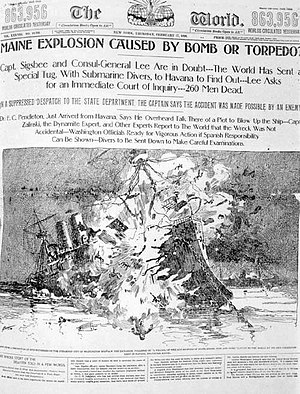 One need not watch TV very long while browsing the news, punditry and talk show circuits to detect a general theme; John McCain is getting criticized far more prolifically than Barrack Obama. For years it has been en vogue for the pundits of right wing ideology to claim media bias against their particular candidates and issues, but on this particular race there appears to be a legitimate, observable bias in the 2008 Presidential Election that was documented by the Pew Research Center. The study focused on the assertions used in coverage of the respective campaigns and group the coverage into the categories of positive and negative. The results of the study were disturbingly disproportional. 36% of the coverage of Obama’s campaign showed a positive tone compared to 14% for McCain. On the coverage deemed negative, Obama received 29% while McCain was 57%. Such disproportioned coverage makes one wonder what part media bias actually plays in influencing public opinion.
One need not watch TV very long while browsing the news, punditry and talk show circuits to detect a general theme; John McCain is getting criticized far more prolifically than Barrack Obama. For years it has been en vogue for the pundits of right wing ideology to claim media bias against their particular candidates and issues, but on this particular race there appears to be a legitimate, observable bias in the 2008 Presidential Election that was documented by the Pew Research Center. The study focused on the assertions used in coverage of the respective campaigns and group the coverage into the categories of positive and negative. The results of the study were disturbingly disproportional. 36% of the coverage of Obama’s campaign showed a positive tone compared to 14% for McCain. On the coverage deemed negative, Obama received 29% while McCain was 57%. Such disproportioned coverage makes one wonder what part media bias actually plays in influencing public opinion.
Of course, politics in the United States has always been a game of media manipulation. Through the voice of news, politicians have been attempting to influence public opinion to secure votes and push agendas. Samuel Adams and Benjamin Franklin had mastered the art of political persuasion through media long before the electronic tools of subversion had manifested themselves. There was no moral standard for media to uphold, objective journalism was a concept that didn’t even exist till late in the nineteenth century. News to that point could be as sensationalistic or one-sided as possible to maintain readership. Newspapers not only endorsed candidates, but also propagandized against opponents. The birth of journalistic standards took place in a media war in New York City that spanned the final decade of the nineteenth century. William Randolph Hearst had purchased the New York Journal and was fighting for readership against Pulitzer’s New York World. Both newspapers had began using sensationalistic journalism to lure in readers, which begat the term “Yellow Journalism”. Both papers featured labor-friendly articles to maintain mass readership ( a business philosophy held by both Hearst and Pulitzer) while backing the Democratic Party. It was in this heightened age of media competition that a lack of journalistic standards flamed the fires of the Spanish-American War.
In 1896 Adolph Ochs had purchased the New York Times and had launched a new era of journalism with his mantra to report ” impartially, without fear or favor, regardless of party, sect or interest involved.” The modern era of journalistic standards was born, but the business of selling news had not died. All media live and die by their circulation, the need to solicit advertising to the masses consuming news. It is perhaps without surprise that in this day of intense corporate media competition bias has been slipping thorough journalistic standards in order to secure viewership. With billionaire’s like Rupert Murdoch and George Soros openly putting money behind media that support their political worldview, the support of journalistic standards during elections seems to be as outdated as the Model T. A recent paper on Political Orientation and Newspapersuggests that there may be a link between media endorsement and the political outcome. This is not to suggest that the populace conforms to the will of their media, rather that people make informed decisions based on the only knowledge they have on hand. And increasingly that information is being produced by companies that are owned by people with a political agenda.Despite any political misgivings writers may have towards John McCain or the Republican Party, many would argue that it is important that the public be given a fair presentation of his views as well as the views of any candidate for public office. Of course no newspaper should be blocked form editorializing the positions of a candidate, rather those in journalism should maintain journalistic integrity by allowing the public to see an unbiased presentation of a candidates issues, and evaluate a candidates merits and positions equally rather that simply targeting one particular candidate. It is a public service that information not be biased by those charged with disseminated it. Of course, given the nature of printed journalism and its history of bias, perhaps it is the public that should not be so quick to accept the presentation of information in one source as being a complete and accurate representation of the facts. In this information age in which news is relayed in seconds by multi million dollar corporations from sources that are as ethereal as the technology used, caveat emptor should be in the back of consumers mind prior to reading the headlines.
